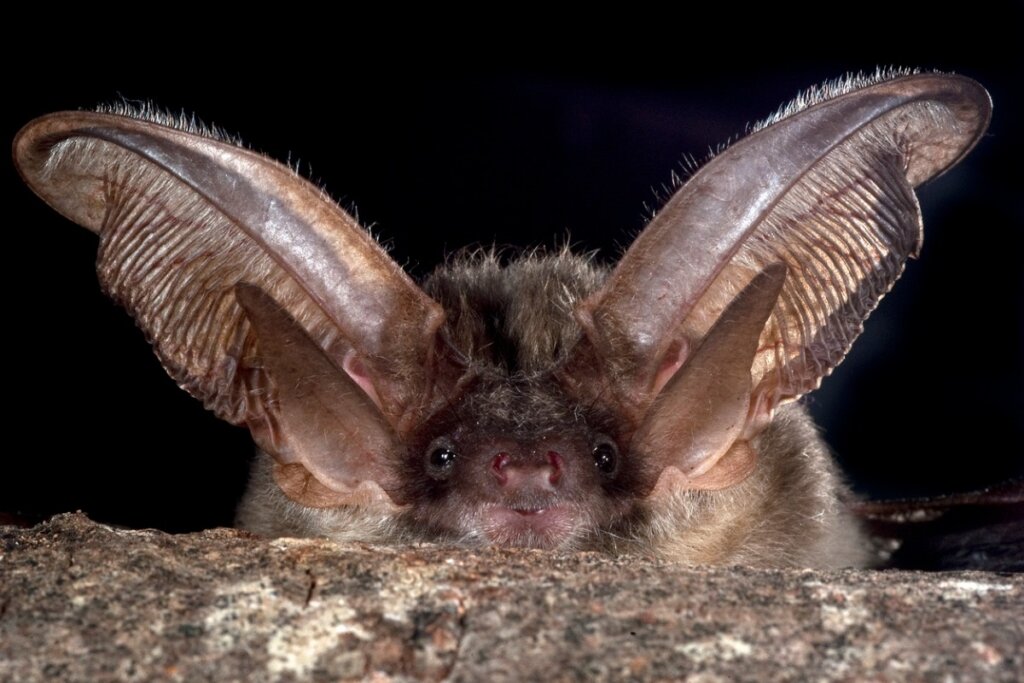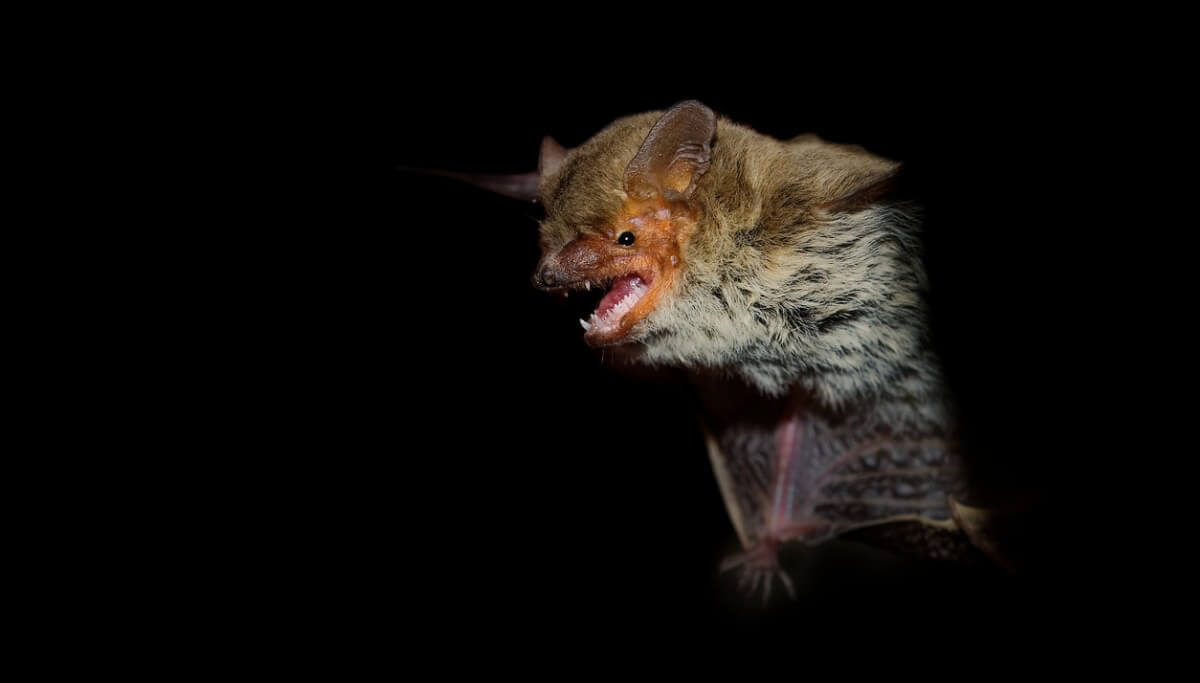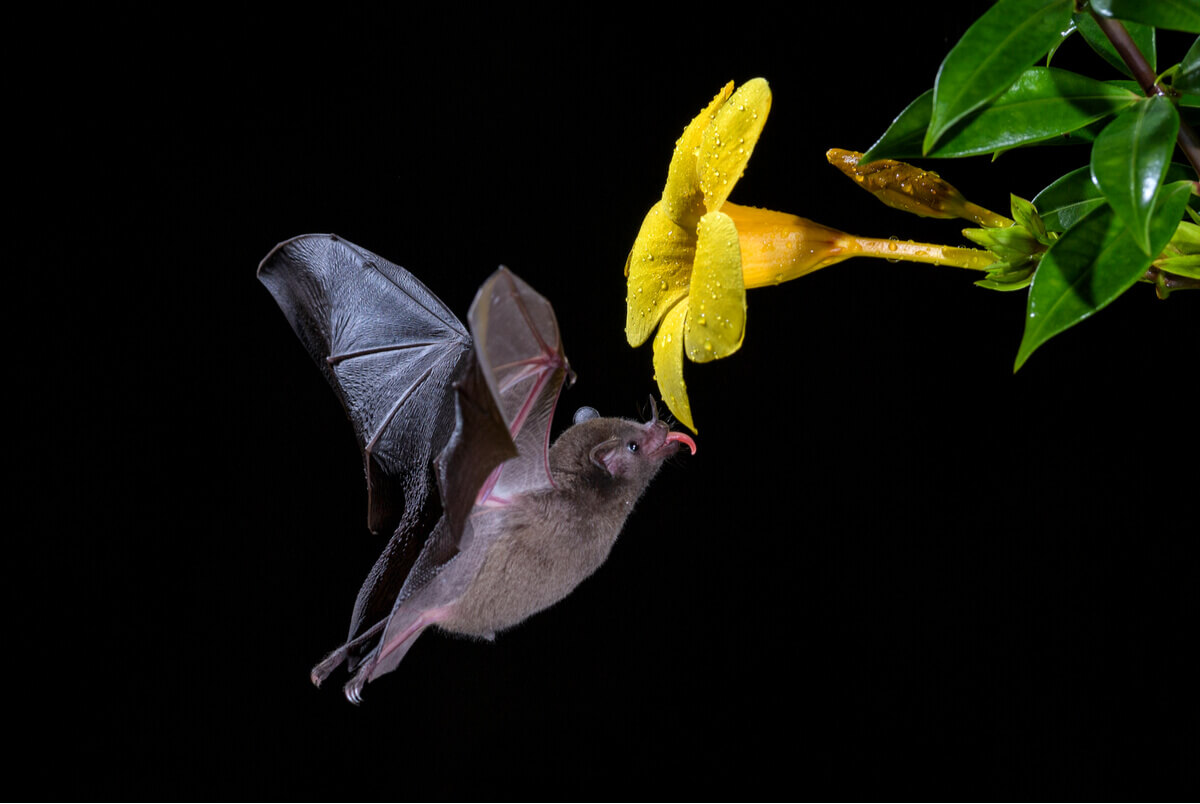How to Scare Bats Away?

Bats, already accustomed to living in environments inhabited by humans, can become a source of danger if they nest in houses. That’s why it’s important to know how to scare bats away as soon as you detect their presence.
However, this doesn’t mean that you have to harm them. In this article, you’ll find out why these mammals must be preserved and what’s the most effective method to make them leave your home without anyone getting hurt. Keep reading.
The risks of having bats in your home
Bats that live in cities and towns tend to look for holes in buildings and walls that they can sleep in during the day. For this reason, they can sometimes crawl into garages, roofs, and other nooks and crannies of inhabited houses. Their noises at night may be annoying, but a bat will never attack you.
The greatest danger posed by these mammals lies in their droppings, known as guano, which accumulate under their nests. In addition to their unpleasant smell, they can be a source of transmission of viruses, bacteria (rickettsiae, spirochetes, and leptospires), fungi, protozoa, and helminths.
At the same time, bats are a vector for rabies. If they nest directly where human families live–with their respective domestic animals–they can be the cause of an outbreak of this disease.
So, isn’t it better to kill them?
The answer to this question is always a resounding NO. There are more than 200 species of bats that are in decline and all of them are protected. Causing them harm or death is considered a crime against wildlife and can involve large fines, depending on the state.
Furthermore, the role of bats in the ecosystem is irreplaceable. Some of their functions are the following:
- Pollination of plants: Nectar-feeding species help fertilize plants in the same way that bees do.
- Seed dispersal: Those bats with a fruit-based diet release seeds through their droppings away from the parent tree.
- Control of insect populations: Summer nights are much easier to endure thanks to bats. In addition, in many countries, they feed on blood-sucking mosquitoes that can transmit diseases such as malaria and dengue, reducing their impact and protecting humans.
It would take millions of dollars and tons of pesticides to replace the role of bats as pest controllers of corn and rice crops. In addition, guano is a great fertilizer for plants.

How to scare bats away?
Scaring bats away from a house is a step-by-step process that ensures that once they’ve left their lair, they can’t get back in. Here are the steps in detail:
- Find where bats have been roosting: The most reliable indicator is the accumulation of guano in specific areas of the house. If the bat species feeds on fruit, you’ll also find nibbled pieces of fruit and the droppings will be more pasty and sticky.
- Identify the species: This is to find out if they’re breeding or not. If you scare the bats away while they have young that can’t fly, some may die in the process of chasing them away. Also, interfering with the breeding season will harm the population, reducing their numbers until they’re able to breed again.
- Wait for them to come out at night: Make sure that all the bats come out at a specific time. If you observe them for a few days, you’ll also be able to identify the openings through which they enter and leave.
- Seal all the entrances: Once you have the bat population under control, seal all the cracks and holes where you’ve seen them coming and going.
- Clean the place thoroughly: Make sure you protect yourself with gloves, a mask, and goggles. Any clothing you wear should be discarded after cleaning. Peel off dried feces and use airtight bags to dispose of them. You can use bleach to disinfect floors and surfaces.
In the event that a lone bat has wandered into your home, don’t worry: It probably got disoriented and ended up there by mistake, not to establish a lair. Use a box to trap it against the wall and slide in a piece of cardboard or paper to close it. Then, just go outside and release it.
Other methods for repelling bats
To make sure that the colony that was nesting in your home doesn’t try to get back in, here are some repellent methods that can complement the process of sealing their lairs. They also serve to keep them from nesting in your home in the first place. Here they are:
- Naphthalene (mothballs): Although its strong odor deters bats from approaching the place, this compound should be handled by someone that’s trained to do so, as it’s highly flammable and is a toxic hydrocarbon for humans and household animals.
- Place lights near where the bats are nesting: If they’re starting to establish themselves, you can set up light sources that will disturb them while they sleep during the day. Unable to rest, they’ll eventually move elsewhere.
- Ultrasonic emitters: There are devices on the market that emit sonic frequencies that produce interference in the echolocation of bats so that they scare them away.
- Bat hotels: Both for Chiroptera lovers and to ensure their presence in crops and other places where you want to control mosquito populations, these hotels also serve to give them an alternative shelter and keep them out of your house.

Bats shouldn’t be wiped out
Some flying-in-the-dark, chirping, ghostly-looking animals are fodder for horror stories. Unfortunately, this bad reputation surrounding bats has caused their decline in many areas.
That’s why the dissemination of ethical methods to eliminate their presence is so necessary. Besides, as soon as you do some research on them, you’ll surely become a fan of bats, as they’re truly amazing animals. Coexistence between species is possible, so never resort to violence or extermination.
All cited sources were thoroughly reviewed by our team to ensure their quality, reliability, currency, and validity. The bibliography of this article was considered reliable and of academic or scientific accuracy.
- Boyles, J. G., Cryan, P. M., McCracken, G. F., & Kunz, T. H. (2011). Economic importance of bats in agriculture. Science, 332(6025), 41-42.
- ¿Murciélagos en casa? (2021, 26 agosto). SECEMU. http://secemu.org/murcielagos/murcielagos-en-casa/
- Del Estado, J. (2011). Boletín Oficial del Estado. Boletín Oficial del Estado, 39.